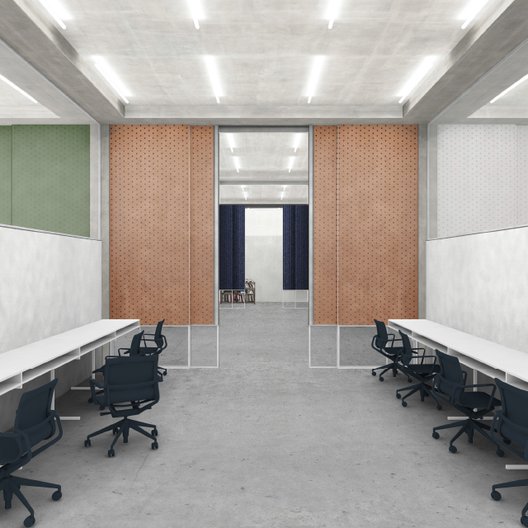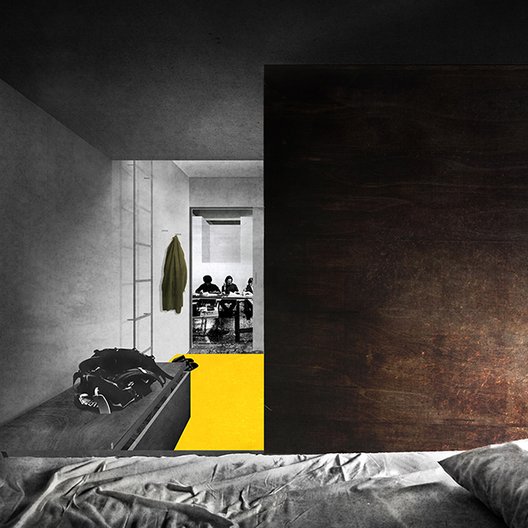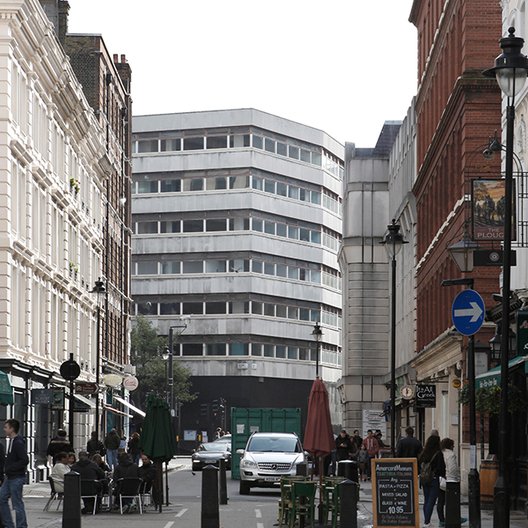27 May 2016
Home Economics is this year’s exhibition at the British Pavilion for the Venice Architecture Biennale. Before the exhibition opens to the public on 28 May, we wanted to gain some insight into the ideas and concepts behind the designs that will be unveiled.
This year the curators Jack Self, Shumi Bose and Finn Williams have invited established and emerging artists, architects and designers to produce immersive 1:1 environments, which challenge the status quo and propose new futures for the home. Each of the five rooms in the pavilion has been designed around incremental amounts of time: HOURS, DAYS, MONTHS, YEARS and DECADES. This week we interviewed Hesselbrand about their design for the fifth and final room, DECADES.
Hesselbrand is an architecture practice focused on the relationship between physical form and the life it allows for. Through research based design their work challenges existing conventions through direct yet rooted architectural proposals. Their architecture, academic work, and collaborative projects are part of an ambition to bridge the gap between theory and praxis. Hesselbrand is based in London and founded by Martin Brandsdal, Magnus Casselbrant and Jesper Henriksson.
Why do you feel it is relevant to talk about architecture in terms of ‘decades’?
The interval Decades in relation to the architecture of the home suggests the possibility for a model of housing that allows a person to live out his or her entire life within its walls. By designing the entire home as a single room, which unlike the traditional apartment has no need for corridors or service spaces, it liberates us from ordering and allocating functions according to a diagram. Instead of bedroom, bathroom or kitchen we focus on creating spatial qualities that go from light and dark, open and closed, private and public, wet and dry, soft and hard. This produces a different kind of flexibility where spaces can be interpreted and adapted to people’s changing needs over time. Here, it is a specific architectural form that allows for a loose type of use.
How does the DECADES room in the British Pavilion respond to the Biennale theme, Reporting from the Front?
The young and elderly are the two fastest growing groups of society, paradoxically they remain some of the most overlooked people of today. Our work is a response to how difficult it can be to dwell as an individual in an environment built almost entirely around the nuclear family. We believe that in bringing these two groups together we can create an exchange between generations which can have exponential effects. The DECADES room is a response to what it means to live today and what constitutes the eternal qualities of space and the human form. It extends to the design of a model for housing where communitarian life bridges generational gaps and the interdependency between social and private space is recognised.
What influenced your design of the DECADES space? Can you give any examples of existing designs, architecture or places that you have drawn on for DECADES?
Our everyday life, where inspiration and frustration goes hand in hand, is perhaps what influences our work the most. However, our work sits within a long trajectory of architectural history. The fundamental parts of architecture (walls, floors, doors, windows) define the framework for our social relations and today the stagnated forms we inhabit struggle to keep up with our changing needs. People today are much more open to share, however at the same time privacy has become an almost impossible luxury. Of course there are many architects, artists and writers whose work we admire a great deal and who undoubtedly influence our own output, but our ideas are primarily informed by what we see when we look at our own lives.
How have your previous projects influenced your design or ideas for the DECADES room?
Our work revolves around identifying the subject we design for and their needs, in order to propose new ways of living and working. The insight we get from this research is used in every project. So the DECADES room is in many ways the result of several themes that we have been working on for a long time; the relevance of functionalism, the capacity of architectural form, how to live and work together and apart. We believe that a key aspect to our work is how each design is positioned within a lineage of thinking, and how these ideas are allowed to evolve with every project. In this way, the reality of the DECADES room ends when the exhibition closes, but the project remains for further development and realisation in other forms.
Where would you like to spend your ‘decades’?
Time will tell.
Home Economics is on show at the British Pavilion for the Venice Architecture Biennale 28 May - 27 November 2016. To find out more click here.
Category
British Council Project











